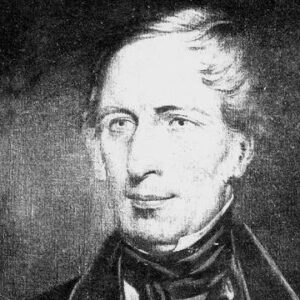Charles Sturt was an English military officer and explorer who led three significant trips into eastern Australia’s interior. Born in India as the eldest son of an East India Company judge, he was educated in England and joined the British army at the age of 18. After thirteen years of service in the military, he was appointed military secretary to the governor of New South Wales. During his time at the station, he developed a passion for exploring the interior of Australia, particularly its rivers. He was compelled by the notion that it was his destiny to find a large saltwater lake, known as “the inland sea,” in the center of Australia. Afterward, he made the first of his major trips, during which he traced the Macquarie, Bogan, and Castlereagh rivers and discovered the Darling River. He then continued down the Murrumbidgee River, where he discovered the Murray River and Lake Alexandrina. After being fully fatigued and nearly blinded on his voyage due to inadequate nutrition and overexertion, he spent the following years recuperating in England. Later, he led his final journey in quest of an inland sea, but severe weather and illness prevented his party from continuing further. His party was the first to reach the center of the continent, even though they discovered no fruitful soil and were eventually pushed back.
Youth and Early Life
Charles Sturt was born on April 28, 1795, in Bengal, British India, to British East India Company judge Thomas Lenox Napier Sturt. He was the oldest son of his family’s 13 children.
At the age of five, he was taken to England to be educated by his relatives. In 1810, after attending a preparatory school, he was sent to Harrow.
His father lacked the financial means to send him to Cambridge University or establish him in a career. In 1813, as a result of an aunt’s petition to the Prince Regent, he was gazetted as an ensign in the British Army’s 39th (Dorsetshire) Regiment of Foot.
Charles Sturt’s Career
After serving with the Duke of Wellington in the Peninsular War, Charles Sturt was commissioned in the American War. Additionally, he participated in the Battle of Waterloo before returning to Europe.
In April 1823, he was promoted to lieutenant, and in December 1825, he was promoted to captain. Following a detachment from his army, he led convicts to New South Wales aboard the Mariner in 1827, arriving in Sydney.
He took a strong interest in New South Wales as a result of its calming conditions and climate. The Governor of New South Wales named him to brigade major and military secretary, and he made connections with other adventurers.
In 1828, he received permission for his first voyage, which consisted of investigating the western New South Wales Macquarie River region. The expedition followed the courses of the Macquarie, Bogan, and Castlereagh rivers, and also discovered the Darling River. The crew returned to Wellington Valley in 1829.
His voyage deepened the enigma surrounding the western-flowing rivers of New South Wales, and he recommended a second expedition down the Murrumbidgee River to solve it. In January 1830, his company reached the junction of the Murrumbidgee and the Murray River, which he named.
Then, he continued down the Murray until the confluence of the Darling River, where he demonstrated that all western-flowing rivers finally emptied into the Murray. The expedition reached a big lake in February 1830, which Charles dubbed Lake Alexandrina.
After returning from the mission, he nearly lost his vision due to overexertion and served briefly as Commander of Norfolk Island before relocating to England.
Midway through 1835, he went to Australia and began farming on his own 5,000 acres of property on the lower reaches of Ginninderra Creek, which had been granted to him by the New South Wales government.
In December 1839, he and his wife participated in an expedition on the Murray River that led to the discovery of Mount Bryan.
In August 1844, he embarked on his third and final journey to investigate northwestern New South Wales and push into central Australia. After a period of travel, the group became stranded for several months due to the severe summer temperatures. Later, he attempted to reach the middle of Australia a second time, but his health deteriorated and he was forced to quit the trip.
Sturt’s Major Opera
The excursions he led down the Murrumbidgee and Murray rivers in 1829 and 1830 are regarded as some of the most significant in Australian history. The expedition uncovered vast tracts of land in New South Wales and South Australia for future development.
Awards & Achievements
Charles Sturt received the Royal Geographical Society’s Gold Medal in 1847.
Personal History and Legacy
Sturt married Charlotte Christiana Greene, the daughter of an old family friend, in September 1834.
Charles Sturt passed away on June 16, 1869, at the age of 74, in Cheltenham, Gloucestershire, England. He left behind a wife and three children.
Estimated Net Worth
Charles is one of the wealthiest and most well-known explorers. According to our research, Wikipedia, Forbes, and Business Insider, Charles Sturt has an estimated net worth of $1.5 million.


